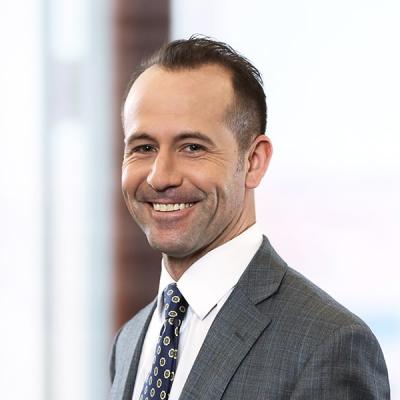Fed Circuit Reverses PTAB Decision in IPR Proceeding
On June 16, the Federal Circuit issued its first-ever reversal of a Patent Trial and Appeal Board decision in an America Invents Act post-grant proceeding. The opinion, drafted by Chief Judge Prost and joined by CAFC Judge Lourie and E.D. Tex. Judge Gilstrap, provides considerable guidance on claim construction and claim amendments in practice before the PTAB.
The case is Microsoft Corp. v. Proxyconn, Inc., No. 2014-1542 and 1543. It reached the Federal Circuit after Proxyconn asserted U.S. Patent No. 6,757,717 against Microsoft in the Central District of California, and Microsoft initiated two separate inter partes review proceedings against the patent (IPR2012-00026 and IPR2013-00109). The PTAB joined the two IPRs and granted review on certain claims. In its final written decision, the PTAB found all but one reviewed claim unpatentable and denied Proxyconn’s motion to amend its claims. Both parties appealed. The Patent Office intervened in support of the PTAB’s position.
The Federal Circuit vacated certain portions of the final written decision, holding that the PTAB's claim constructions exceeded the “broadest reasonable interpretation” standard. The PTAB’s denial of Proxyconn’s motion to amend was not disturbed. Here are some key takeaways from the case:
Claim Construction before the PTAB
- Applying the standard set forth in Teva Pharms. U.S.A., Inc. v. Sandoz, Inc., 135 S. Ct. 831 (2015) to PTAB proceedings, the Federal Circuit will review PTAB claim constructions de novo and underlying facts involving extrinsic evidence for substantial evidence. In Proxyconn, the Federal Circuit did not need to consider the PTAB’s findings regarding extrinsic evidence because the intrinsic record “fully determin[ed] the proper construction.” Op. at 6 (citing Teva Pharms. U.S.A., Inc. v. Sandoz, Inc., 135 S. Ct. 831 (2015) and Phillips v. AWH Corp., 415 F.3d 1303, 1318 (Fed. Cir. 2005) (en banc)).
- While the PTAB is permitted to apply the “broadest reasonable interpretation” standard, Op. at 6 (citing In re Cuozzo Speed Techs., LLC, 778 F.3d 1271 (Fed. Cir. 2015)), that standard does not include “giving claims a legally incorrect interpretation”. Claims must “always” be construed in light of the intrinsic evidence (e.g., claim language, specification, prosecution history).
- In Proxyconn, the CAFC found the PTAB’s construction of two claimed components “unreasonably broad”. The Court first concluded that the PTAB erred in construing “two other computers” to include “the caching computer,” since such construction actually encompass other claimed components (e.g., the claim covered a system composed of A, B, C, D, and the Board’s construction of element B included C and D). Op. at 8-9. According to the panel, the PTAB also wrongly construed “sender/computer” and “receiver/computer” as including intermediaries, explaining that the patent disclosure consistently refers to these two components as separate and independent components. Op. at 11.
Motions to Amend before the PTAB
- The CAFC identified three sources of requirements for motions to amend: 37 C.F.R. § 42.121, 37 C.F.R. § 42.20, , and the Board’s decision in Idle Free Systems, Inc. v. Bergstrom, Inc., IPR2012-00027, 2013 WL 5947697 (PTAB June 11, 2013).
- The “procedural” requirements for filing a motion to amend described in 37 C.F.R. § 42.121(a), include that the motion to amend must:
- Be filed no later than the patent owner response unless the Board provides otherwise;
- Respond to a ground of unpatentability involved in the trial; and
- Not enlarge the scope of the patent or introduce new subject matter.
- The “substantive” requirements for filing a motion to amend described in 37 C.F.R. § 42.20, include that the patent owner has the burden of proof to establish that it is entitled to the amended claims.
- The additional requirements for motions to amend in Idle Free Systems, Inc. v. Bergstrom, Inc., IPR2012-00027, 2013 WL 5947697 (PTAB June 11, 2013) include at least the following:
- Identify specifically the feature or features added to each substitute claim, as compared to the challenged claim it replaces;
- Provide technical facts and reasoning about each such feature, including construction of new claim terms;
- Show patentable distinction over the prior art of record;
- Show patentable distinction over any other prior art known to the patent owner;
- Make a representation about the specific technical disclosure of the closest prior art known to the patent owner.
- In Proxyconn, the CAFC was presented with the question whether the Board could rely on requirements beyond those set forth in the regulations – i.e. the requirements of Idle Free – to decide motions to amend. The CAFC specifically upheld one of the additional Idle Free requirements—namely, the requirement that the patent owner show that the substitute claims are patentably distinct over the prior art of record, including prior art that was of record, but that was not part of the ground instituted with respect to the claims being amended.
- The CAFC did not reach the merits of the other requirements of Idle Free. Indeed the opinion specifically stated in a footnote that the opinion did not address whether the Board could require patent owners to demonstrate that a proposed amended claim was patentable over all prior art known to the patent owner.
- As a result, it is now clear that patent owners must demonstrate the patentability of proposed substitute claims over any of the prior art made of record in a post-grant proceeding, even if such prior art is not specifically part of an instituted ground with respect to the claims being amended. It remains to be seen whether the CAFC will uphold the other requirements of Idle Free.
Practice Tips
Going forward, Proxyconn suggests that it likely behooves PTAB practitioners to tie their proposed claim constructions directly to the intrinsic evidence and also consult “informative” PTAB opinions, such as Idle Free, in making important strategic decisions, such as whether to move to amend one or more challenged claims of a reviewed patent.
Authors


